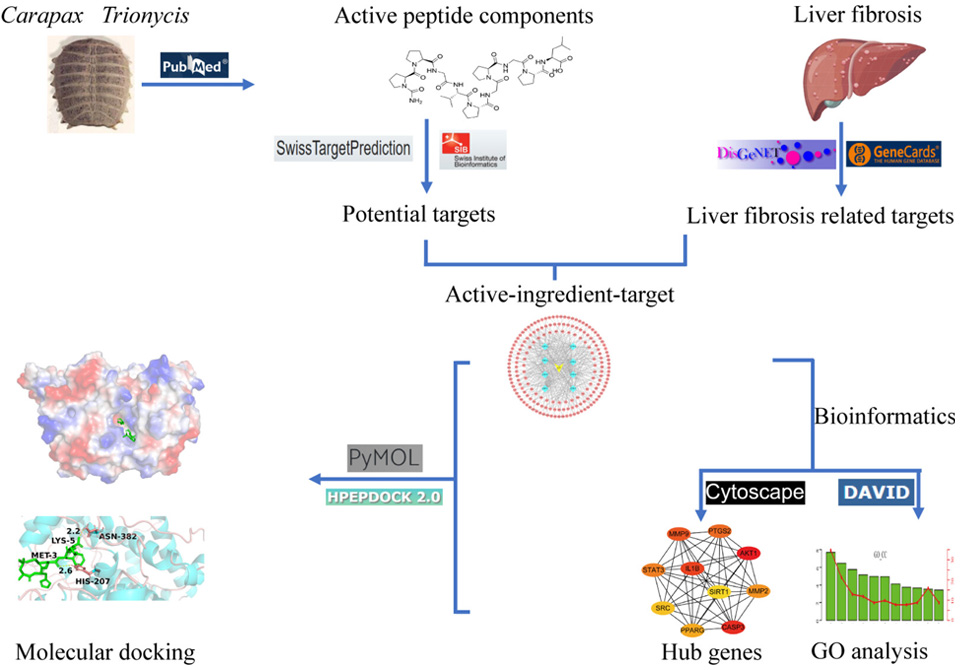Network Pharmacology
Reflecting recent work in the Jin
Carapax Trionycis is a traditional Chinese medicine and it has been clear that oligo-peptides from Carapax Trionycis extract, CTP, are the main active substances for the treatment of liver diseases. However, little is known about the mechanism of CTP against liver fibrosis.
In an article published in Peptide Science, members of the Jin Group at the Zhejiang Sci-Tech University, Hangzhou, China, present how network pharmacology combined with molecular docking were performed to identify the in-silico molecular mechanism and the potential targets for CTP to ameliorate liver fibrosis.
The group members collected eight active peptides ingredients, published in public databases, and predicted the targets. Liver fibrosis related genes were acquired from the GeneCards and DisGeNET platform. Then, they identified a total of 52 peptides-liver fibrosis-related genes. KEGG and GO enrichment analyses indicated that these targets are significantly enriched in relaxin signaling pathway, IL-17 signaling pathway, and TNF signaling pathway.
The researchers then identified the top 10 genes with high centrality measures from the network by CytoHubba, including CASP3, AKT1, IL1B, MMP9, and PTGS2. The molecular docking between these hub genes and the corresponding CTP was performed in GRAMM and visualized by PyMOL.
The group's results provide an important reference and scientific basis for treating liver fibrosis with CTP.


